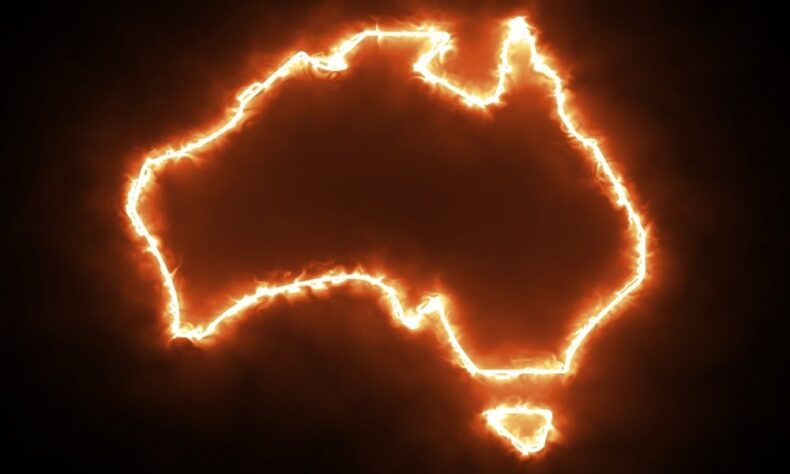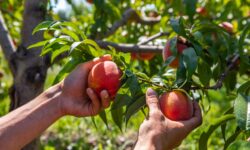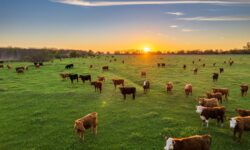Extreme weather throughout the year will cause a shortage of stone fruit in BC: We…
Just as the heated conversations about the Amazon rainforest fires seemed to extinguish, forest fires have returned to the public’s mind as Australia sets ablaze. This week, we wanted to fill you in on everything you need to know and share some ways that you can be part of the solution.
What is happening
Since July, bushfires have started all over Australia, but most have been found in the state of New South Wales (1). Unlike the situation in the Amazon, the cause of most of these fires is natural. Scientists have determined that many of these fires have started from “lightning strikes in drought stricken areas” (2). In some cases however, fires have been reportedly started by people which police have since charged or are taking legal action against (3).
Last week, two major fires merged together to form what news outlets are calling a “mega blaze” (4). To put this into perspective, the collective size of the fires happening throughout Australia are measured to be bigger than the countries of Belgium and Denmark put together (5).
As these fires rip through the country, many populations and animal species are being negatively impacted. So far, 27 people have lost their lives, millions of animals are presumed dead, and billions have been displaced as the landscapes they call home are burning (6).
What’s different this year
For those that know Australia well, you know that forest fires are common occurrences in the summer season, so what is all the hype about this year?
The Australian fires are a story of climate change. According to the country’s Bureau of Meteorology, Australia’s last spring was the driest on record and December brought the hottest temperatures on record nationwide (7). As a result, New South Wales is now battling the largest fire in state history (8).
The Australian public has responded by taking to the streets and demanding their government take greater action both against the fires and combating climate change in general (9). Last Friday, tens of thousands of Australians marched in climate strikes throughout New South Wales (10).
The country’s federal government has been reluctant to suggest that the magnitude of the fires has anything to do with climate change, but they have sent in military assistance and allocated 3 billion Australian dollars to fight the disaster (11).
How can you help
The most valuable way that Australian organizations are saying you can help is by donating to services that are combating the fire in various ways. If you want to help people affected by the bushfire, we recommend donating to the Australian Red Cross. To help firefighters working in Australia’s most affected province, consider supporting NSW Rural Fire Service. Lastly, if you want to help Australia’s at-risk animal populations, please donate to organizations like the World Wildlife Fund- Australia.
If you can’t donate, consider adopting a new environmentally-friendly habit! These fires are worse than previous years due to climate change so if we can make choices in our personal life that can reduce your environmental impact and greenhouse gas emissions, you indirectly help Australia and other countries now and in the future.
Sources:
- 1) Yeung, Jessie. “Australia’s deadly wildfires are showing no signs of stopping. Here’s what you need to know.” CNN World. January 13, 2020. https://www.cnn.com/2020/01/01/australia/australia-fires-explainer-intl-hnk-scli/index.html
- 2) Ibid.
- 3) Ibid.
- 4) “Australia bushfire crews battle mega blaze near Snowy Mountains.” January 10, 2020. https://www.bbc.com/news/world-australia-51052042
- 5) Ibid.
- 6) Ibid.
- 7) Ibid.
- 8) Freedman, Andrew. “A ‘megafire’ measuring 1.5 million acres forms in Australia as bushfires merge.” The Washington Post. January 10, 2020. https://www.washingtonpost.com/weather/2020/01/10/megafire-measuring-15-million-acres-forms-australia-bush-fires-merge/
- 9) Ibid.
- 10) “Australia bushfire crews battle mega blaze near Snowy Mountains.” January 10, 2020. https://www.bbc.com/news/world-australia-51052042
- 11) Yeung, Jessie. “Australia’s deadly wildfires are showing no signs of stopping. Here’s what you need to know.” CNN World. January 13, 2020. https://www.cnn.com/2020/01/01/australia/australia-fires-explainer-intl-hnk-scli/index.html




